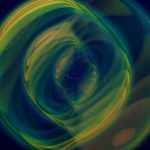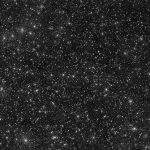Key Takeaways:
- Recent research suggests gamma-ray burst pulses may exhibit time-reversing characteristics.
- The phenomenon may be linked to waves within relativistic jets traveling at superluminal speeds.
- When light travels through a medium, its phase velocity can surpass the speed of light in a vacuum.
- Gamma-ray bursts are energetic cosmic explosions with origins in neutron star collisions and hypernovae.
- The study introduces a model involving impactor waves and Cherenkov radiation to explain time-reversible light curve features.
In a fascinating turn of events, recent research delves into the peculiar behavior of gamma-ray burst pulses, suggesting a potential time-reversibility effect. This intriguing phenomenon might find its origin in waves within relativistic jets surpassing the speed of light, a concept known as superluminal motion. Interestingly, when light traverses a medium like gas or plasma, its phase velocity can indeed exceed the speed of light in a vacuum, hinting at a possible explanation for this enigmatic behavior.
Gamma-ray bursts, some of the most powerful explosions known, remain a cosmic mystery. Their durations range from milliseconds to hours, emanating dazzling brightness, yet their causative factors remain largely uncharted territory. While observations of colliding neutron stars in 2017 shed light on their creation, gamma-ray bursts are also suspected to stem from the collapse of rapidly spinning stars into black holes, ejecting material in a cataclysmic hypernova event.
Returning to the notion of waves surpassing light speed, this phenomenon is reminiscent of Cherenkov radiation – a radiant blue glow produced when charged particles outpace the phase velocity of light in a medium. Astrophysicists Jon Hakkila and Robert Nemiroff have proposed that a similar effect may manifest in gamma-ray burst jets, supported by mathematical modeling. Their model suggests that an impactor wave within an expanding gamma-ray burst jet can transition from subluminal to superluminal velocities, resulting in Cherenkov and other collisional radiation.
This theoretical framework introduces the concept of relativistic image doubling, akin to occurrences in Cherenkov detectors. If realized, this phenomenon could explain the time-reversibility observed in gamma-ray burst light curves. Further research is imperative to validate these intriguing hypotheses, particularly in determining the nature of the impactor responsible for generating gamma-ray bursts. Nevertheless, this model provides a more comprehensive explanation for the characteristics of gamma-ray burst light curves, shedding light on the intriguing interplay between these cosmic phenomena and time.
The research has been published in The Astrophysical Journal.


